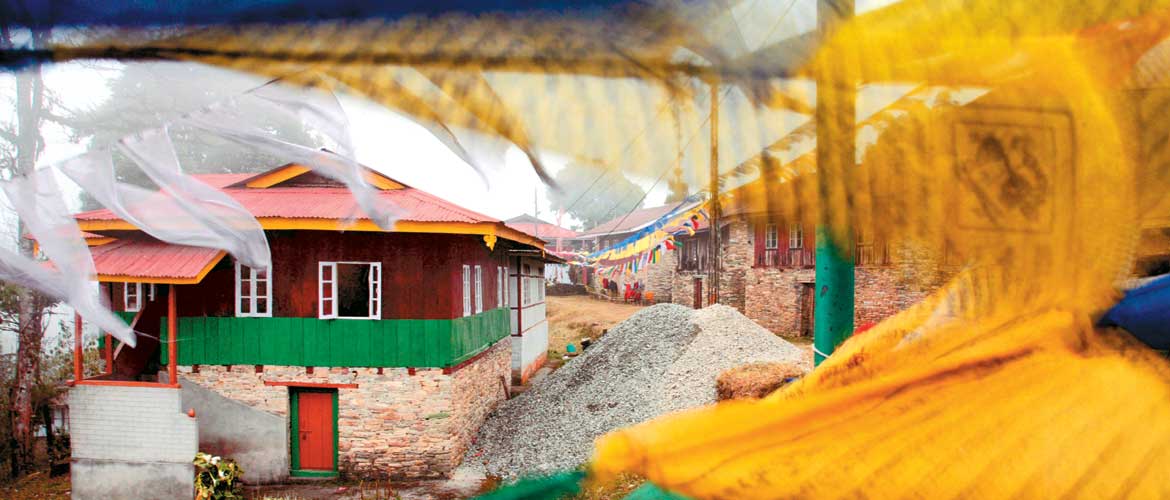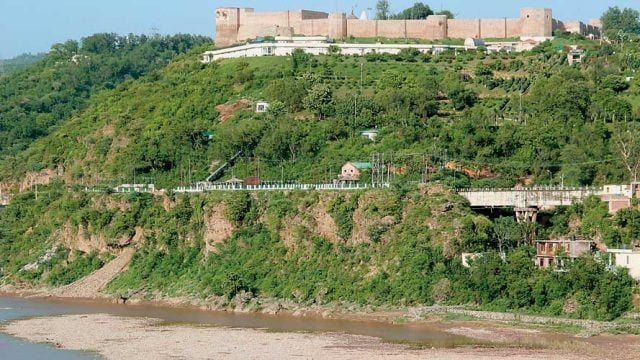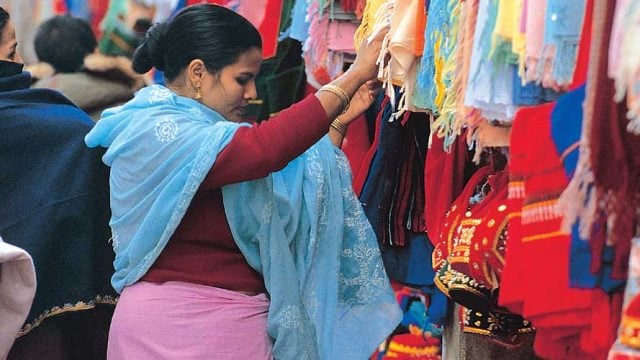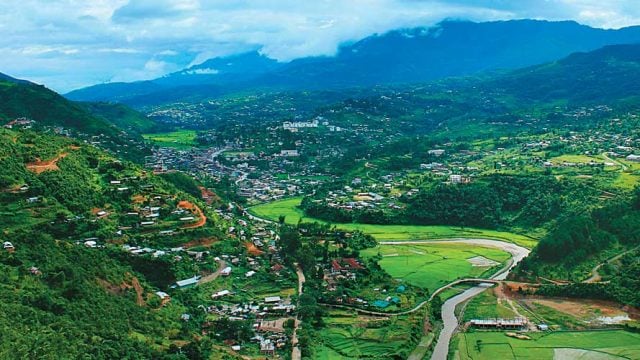Pelling, a small hamlet in West Sikkim till a few decades ago, is quickly developing
THINGS TO SEE AND DO
You can visit the famous Pemayangtse Monastery as well as Sangachoeling, the second-oldest gompa in Sikkim. The ruins of the erstwhile capital of Sikkim at Rabdentse, restored by the ASI, are not to be missed.

Pemayangtse Monastery
Located half a kilometre outside of town, this is the third-oldest monastery in Sikkim, established in 1705 CE. Its name is derived from ‘padma yang tse’, literally translating to ‘the sublime perfect lotus’. The monastery was built after the legendary Lhatsun Chennpo had introduced Lamaism in Sikkim in the 17th century.
Legend has it that Lhatsun flew over the 24,000-ft high Mount Kabru when he could find no overland route from Tibet to Sikkim. Upon reaching Yuksom, he helped in the coronation of the first king of Sikkim and founded the first-ever monastery in Sikkim at Dubdi. Pemayangtse is said to have been designed by Lhatsun for the use of the ‘ta-sang’, or ‘pure monks’, of Tibetan origin.
But what really links the monastery to the lama is the extraordinary Sangtok-Palri, a three-dimensional wooden model of a celestial city which came to Lhatsun in a vision. The size of a large dollhouse, containing no nails and put together only with wooden joints, the model represents a beautifully burnished and lacquered celestial city, teeming with palaces and pleasure domes, gardens and pavilions.
The monastery has an atmospheric compound with gardens and cottages inhabited by the resident monks. On the ground floor is a central Buddha image, and upstairs are formidable statues depicting the eight incarna-tions of Padmasambhava.
A great time to visit Pemayangtse is during Losar (February/ March), when the massive embroidered thangka, called gyoku, is unfurled and the place comes alive with the Chaam dance.

Rabdentse
A brisk 25min-walk (3km) from Pell-ing is Rabdentse, the ruins of the second capital of Sikkim from 1670 to 1814, established by Sikkim’s second king, Tensung Namgyal.
Rabdentse is a bit of a puzzle. Of all the buildings in the capital, only the ruins of the palace exist, if you discount the nearby Pemayangtse. Surely a seat of government would retain more signs of its former glory? The ruins are perched on top of a hill and are divided into two distinct sections. The larger one is almost certainly the palace complex and the other probably a more public place, a paved courtyard meant for the king’s subjects. Standing in the courtyard, you have a wide-angle view of the mountains. The way back from Rabdentse to Pelling is uphill and laborious; you may want to take a taxi for the whole trip. The ruins themselves are ten minutes walking from the site’s gate.
Entry Free Timings Dawn to dusk
Tip Beware of leeches. Wear a leech guard if possible
Sangachoeling
No vehicle, however, will take you to the Sangachoeling (the place of secret spells), probably the second oldest monastery in Sikkim. It is situated on the other side of Pelling and takes a good 45 minutes of uphill climbing. Rest assured, the sturdy little monas-tery in its windswept eyrie is worth the trek.
Step into the narrow vestibule in the front and take in the colossal figures painted all over the walls. There are usually four ‘Kings of the Quarters’, who guard the universe against the outer demons. Clad in armour and wearing ferocious expressions, they come in white, yellow, red and green.
The first floor has manuscripts, storerooms, and a tiny retiring room for the priest in charge.

WHERE TO STAY AND EAT
In Pelling, Hotel Takura (Cell: 09609034915; Tariff: ₹2,350–4,950), Newa Regency (Cell: 09333148227; Tariff: ₹5,000–9,000), Norbugang Resort and House (Tel: 03595-250173, 258245/ 72; Cell: 09933004491/ 92/ 93/ 96; Tariff: ₹7,164–9,552) and Chumbi Mountain Retreat (Tel: 099331-26619) are all fancy options.
Hotel Garuda (Tel: 258319; Cell: 09733076484; Tariff: ₹850–2,700) is a budget option just below Phamrong in Upper Pelling, owned by Tshering Wangdi, a knowledgeable host.
The Elgin Mount Pandim (Tel: 250756; Tariff: ₹8,750–10,250, with meals; W elginhotels.com), just below Pemayangtse Monastery, is an erst-while royal residence now open for tourists. Hotel Phamrong (Tel: 250660, Cell: 09733085318; Tariff: ₹2,350–4,950) in Upper Pelling has stylish rooms and an in-house restaurant, which serves good quality vegetarian food.
Hotel Sonamchen (Cell: 097330- 29577; Tariff: ₹4,500–7,000), also in Upper Pelling, offers good services. There is a restaurant adjoining the property as well.
AROUND PELLING
Darap (15km)
A Limbu tribal outpost, Darap is now opening up to tourists. The Daragaon Village Retreat (Cell: 09593976152, 09775948675; Tariff: ₹2,800) run by Shiva and his wife Radha, is a charming homestay and your chance to try your hand at carpet-weaving as well as to eat and cook traditional Limbu food. The homestay also offers a chance to experience village life firsthand: you can feed the animals, cook food, do a little gardening and even fish. Riverside walks and low-altitude as well as high-altitude treks can also be arranged.
Khecheopalri Lake (31km)
This serene natural reservoir stands at a height of 6,400ft and holds an important position in the lives of Sikkimese Buddhists as well as Lepcha animists, the latter believing that the lake’s shape is similar to the footprint of the goddess Tara. The surface of the lake is unusually clean, and some say that it is because birds dutifully remove leaves from its surface. The lake is also said to have been originally known as Kha-Chot-Palri, meaning the heaven of Padmasambhava.
A visual treat awaits those who visit the lake during the annual Khecheopalri Mela, held in the months of either March or April. The distinguishing sight of the fair is butter lamps floating across the lake, while colourful Tibetan prayer flags flutter all around.
Near the car park for the lake is a Buddhist nunnery, a few souvenir shops and a small restaurant for snacks and tea. The uphill path to the left of the car park leads to the Khecheopalri Gompa.
If you want to trek from Pelling to Khecheopalri, there’s a shortcut leading down to the river valley, up to the Pelling-Yuksom road and then up the lake. It can take up to 5 hours.
Entry ₹10
Khecheopalri village has provisions for lodging, trekkers’ huts (Cell: 09609874677; Tariff: ₹500), and some homestay facilities.
Rinchenpong (34km)
This little town is an hour’s drive from Pelling, or five hours up from Siliguri. Two kilometres ahead of the town is the beautiful 44-acre Yangsum Farm (Cell: 09733085196, 09434179029; Tariff: ₹6,000 per person for full board), the best place to base yourself here.
On a clear day, you get great views of the majestic Khangchendzonga. Two 18th-century monasteries are short walks away, one of which is the Resum Gompa, built by a powerful local landlord, with an impossibly felicitous setting at the meeting point of three hills (Kaluk, Rinchenpong and Jhil Hatidhunga). The famous Poison Pokri, or the poisoned lake, is a must-visit. It is said that the Lepchas poisoned this lake, the only water source at the time, to stop the invading British forces; they were successful, though the lake remains poisoned to this day.
Day trips can be planned to a variety of nearby sights, such as the Barsai Rhododendron Sanctuary, and monasteries such as Pemayangtse and Tashiding. You can also opt for relaxed strolls past village homes and the local school. The area is also excellent for birding. Or you could just stay at the farm. Take unhurried walks, watch ducks and geese amble on the makeshift lawn and simply relax.
Biksthang (40km)
For a classic off-the-beaten-track experience, there’s nothing quite like the vast beautiful spaces of Biksthang, located 40km southeast of Pelling. This small district is nestled in the mountains at a little over 4,000ft, and its eponymous town is famous for its views of the Himalaya and birding opportunities.
Stay at the charming Biksthang Heritage Farmhouse (Cell: 081700-15329, 09593779077; Tariff: ₹7,950), a family-owned and operated property. with a dining and bar facility.
FAST FACTS
When to Go March to May; October to November
Tourist Office
Sikkim Tourist Information Centre, Upper Pelling, Near Girl’s Hostel Pelling, West Sikkim
Permits
W sikkimtourism.travel
GETTING THERE
State Sikkim
Location Nestled at an altitude of 7,200ft, Pelling is located in the district of West Sikkim
Distance 115km SW of Gangtok
Route from Gangtok Take NH31 to Kripa Indrane and take diversion to NH510; then go down the Sakyong-Pelling Road
Air Nearest airport: Bagdogra (133km/ 3–4hrs). Taxi ₹3,500–4,000 (drop)
Rail Nearest railhead: New Jalpaiguri (136km/ 3–4 hrs). Taxi as above
Road From Siliguri (122km/ 4hrs), take NH31A to Melli. From Melli, Pelling is reached via Jorethang, Reshi and Legship Bus From Siliguri, there are good connections to Jorethang. Shared jeep ₹250 (min) to Pelling
OT Getaway Guides
Sikkim
Pelling





